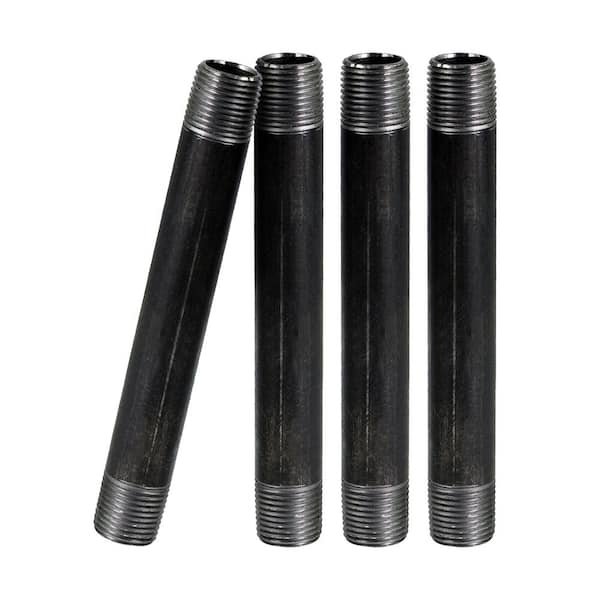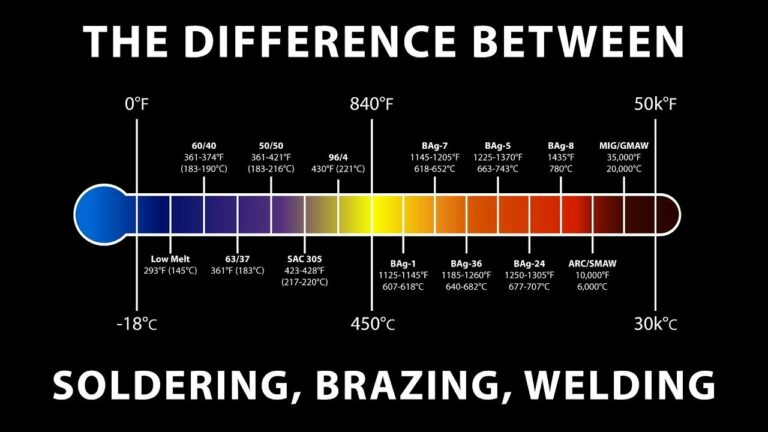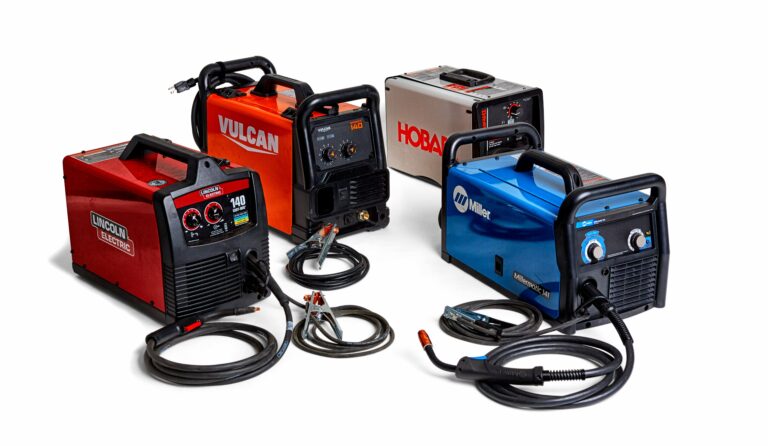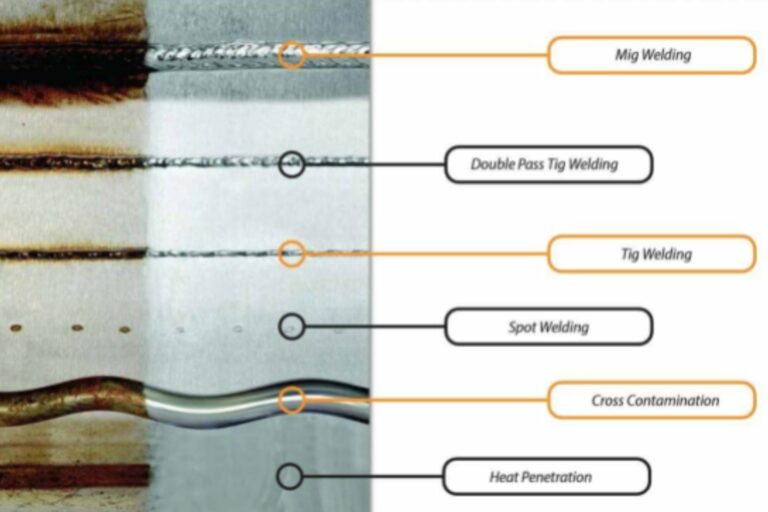The Perfect Choice: Home Use Mig Welder – Efficient & Reliable
Looking for an efficient mig welder for home use? Look no further! In this article, we have the perfect solution for your welding needs. Whether you’re a DIY enthusiast or a professional looking to tackle small projects at home, a mig welder can be a game-changer. With its ease of use and versatility, it allows you to join metals effortlessly. Say goodbye to complicated setups and hours of frustration. With a mig welder for home use, you can unleash your creativity and complete projects with precision and confidence. Let’s dive in and explore the world of mig welders!
MIG Welder for Home Use
Welding is a fundamental skill in metalworking and construction projects. Whether you’re a DIY enthusiast or a professional, having a reliable and efficient welding machine at home can be a game-changer. One popular choice for home use is the MIG welder (Metal Inert Gas). In this article, we will delve into the world of MIG welders for home use, exploring their benefits, how to choose the right one, and important safety considerations.
1. Why Choose a MIG Welder for Home Use?
MIG welders are renowned for their ease of use, versatility, and suitability for a wide range of welding applications. Here are some key reasons why a MIG welder is an excellent choice for home use:
1.1 User-Friendly Operation
MIG welders are known for their user-friendly operation, making them ideal for beginners and hobbyists. Unlike other welding processes, such as stick or TIG welding, MIG welding requires minimal skill and practice to achieve good results. The process involves feeding a continuous wire electrode through a welding gun while an inert gas shield protects the weld pool, ensuring a clean and strong joint.
1.2 Versatility
MIG welders offer versatility in terms of the materials they can weld. They are suitable for welding various metals, including mild steel, stainless steel, and aluminum. This versatility makes them a valuable tool for a wide range of projects, whether you’re working on automotive repairs, fabricating furniture, or creating artwork.
1.3 Speed and Efficiency
Another advantage of MIG welders for home use is their speed and efficiency. The continuous wire feed system allows for faster welding compared to other processes, reducing project completion time. Additionally, MIG welding produces minimal slag, resulting in less post-weld cleanup.
2. Factors to Consider when Choosing a MIG Welder for Home Use
With numerous MIG welders available in the market, it’s essential to consider specific factors to ensure you choose the best one for your home welding needs. Let’s explore some important considerations:
2.1 Power Output
The power output of a MIG welder determines its welding capabilities. It is typically measured in amps or volts. Before purchasing a MIG welder, you should assess the thickness of the materials you plan to weld and choose a welder with adequate power output to handle those tasks.
2.2 Duty Cycle
The duty cycle represents the amount of time a welder can operate within a 10-minute period without overheating. It is expressed as a percentage. For instance, a 60% duty cycle at 200 amps means the welder can operate for six minutes continuously before requiring a four-minute cooling period. Consider the duty cycle of a MIG welder to ensure it can handle your welding demands without interruptions.
2.3 Wire Feed Speed and Adjustment
The wire feed speed controls how fast the electrode wire feeds into the welding arc. It is crucial for achieving the right weld bead size and penetration. Look for a MIG welder that offers adjustable wire feed speed to accommodate different materials and thicknesses.
2.4 Gas Shielding Options
While MIG welding typically uses a shielding gas to protect the weld pool, some MIG welders offer dual shielding options that allow you to use flux-cored wires without gas. This can be convenient if you want the flexibility to weld outdoors or in environments where gas is not readily available.
2.5 Portability
If you plan on using your MIG welder in various locations around your home or on different job sites, portability is an important factor to consider. Look for a welder with a compact and lightweight design, equipped with built-in carrying handles or a wheeled cart for easy transportation.
3. Ensuring Safety with a MIG Welder
While MIG welding is relatively safe, it’s crucial to follow proper safety precautions to protect yourself and others. Here are some essential safety considerations when using a MIG welder at home:
3.1 Personal Protective Equipment (PPE)
Always wear appropriate personal protective equipment when welding. This includes a welding helmet with a proper shade filter, safety glasses, welding gloves, and flame-resistant clothing to protect yourself from sparks, UV rays, and potential burns.
3.2 Adequate Ventilation
Ensure you have proper ventilation in your welding area to prevent the accumulation of harmful fumes. Welding in a well-ventilated space or using a fume extraction system will help maintain good air quality and protect your respiratory health.
3.3 Fire Safety
Keep a fire extinguisher readily available in your welding area in case of emergencies. Make sure you have a clear and safe workspace, free from flammable materials. It’s also essential to be mindful of hot sparks and properly dispose of welding debris.
3.4 Welding Area Setup
Set up your welding area in a designated space away from highly flammable materials, children, and pets. Clear any clutter and ensure a clean and organized workspace. It’s also advisable to have a fire-resistant welding blanket or mat to protect surrounding surfaces from sparks and spatter.
4. Maintenance and Care for Your MIG Welder
Proper maintenance and care will help extend the lifespan of your MIG welder and ensure optimal performance. Here are some maintenance tips for your MIG welder:
4.1 Cleaning and Inspecting
Regularly clean your MIG welder, removing any dust, debris, or spatter that may accumulate. Inspect the welding gun, cables, and connections for any signs of wear or damage. Clean or replace the contact tip as needed for consistent weld quality.
4.2 Wire and Gas Management
Ensure the wire spool is properly installed and aligned. Check the tension settings to prevent wire jams or bird nesting. If using a shielding gas, ensure the gas cylinder is securely fastened and properly connected to the regulator.
4.3 Storage
When not in use, store your MIG welder in a dry and protected environment. Shield it from dust and moisture to prevent corrosion. Follow manufacturer guidelines for long-term storage or winterization if necessary.
In conclusion, a MIG welder is an excellent investment for home use, providing versatility, ease of use, and efficiency. By considering important factors such as power output, duty cycle, and wire feed speed, you can choose the right MIG welder to meet your specific welding needs. Remember to prioritize safety by using proper PPE, ensuring adequate ventilation, and following correct welding practices. With proper maintenance, your MIG welder will serve you well for years to come, enabling you to tackle various welding projects with confidence.
Frequently Asked Questions
What is a MIG welder and how does it differ from other types of welders?
A MIG (Metal Inert Gas) welder is a type of welding machine that uses a continuous wire electrode to create an arc between the electrode and the metals being welded. The electrode melts and fuses the metals together. MIG welders are known for their ease of use, versatility, and ability to produce clean, high-quality welds. Unlike other types of welders, MIG welding does not require frequent electrode changes and produces minimal slag and spatter.
Can I use a MIG welder for home projects?
Yes, a MIG welder is commonly used for home projects. Its ease of use makes it suitable for beginners and DIY enthusiasts. Whether you are working on repairing metal objects, fabricating small structures, or creating decorative pieces, a MIG welder can be a great tool for home use. With proper safety precautions and the necessary skills, a MIG welder can help you complete a variety of projects around the house.
What materials can I weld with a MIG welder?
A MIG welder is capable of welding various materials, including stainless steel, mild steel, aluminum, and even some exotic metals. By selecting the appropriate wire and shielding gas, you can weld different types and thicknesses of metal. However, it is essential to consider the specific capabilities of your MIG welder, as some models may have limitations on the materials they can weld effectively.
Is it safe to use a MIG welder at home?
Yes, it is safe to use a MIG welder at home if proper safety precautions are taken. When operating a MIG welder, it is crucial to wear appropriate protective gear, such as a welding helmet, gloves, and flame-resistant clothing. Additionally, make sure you have a well-ventilated work area to prevent the accumulation of hazardous welding fumes. Familiarize yourself with the user manual of your specific MIG welder and follow all safety guidelines provided by the manufacturer.
Do I need special training to use a MIG welder?
While it is not mandatory to have prior welding experience, proper training is highly recommended before using a MIG welder. Attending a welding class or seeking guidance from an experienced welder can help you learn the necessary skills and techniques for safe and effective MIG welding. Understanding how to set up the welder, select the right settings, and perform proper welds will ensure better results and reduce the risk of accidents.
What factors should I consider when choosing a MIG welder for home use?
When selecting a MIG welder for home use, consider factors such as power requirements, amperage range, duty cycle, and wire feed speed control. Assess the type and thickness of metals you intend to weld and choose a welder that can accommodate your requirements. Additionally, consider the portability, warranty, and availability of accessories or spare parts. Researching customer reviews and consulting with professionals can also help you make an informed decision.
Final Thoughts
In conclusion, a MIG welder for home use is an essential tool for anyone looking to engage in DIY welding projects. With its user-friendly design and versatility, it allows individuals to easily join metal pieces together, making it ideal for various household repairs and hobbyist projects. The convenience of this welder cannot be overstated, as it eliminates the need for complex setups and extensive training. Whether you are a beginner or an experienced welder, investing in a MIG welder for home use will provide you with the necessary power and precision to accomplish your welding tasks effectively.



